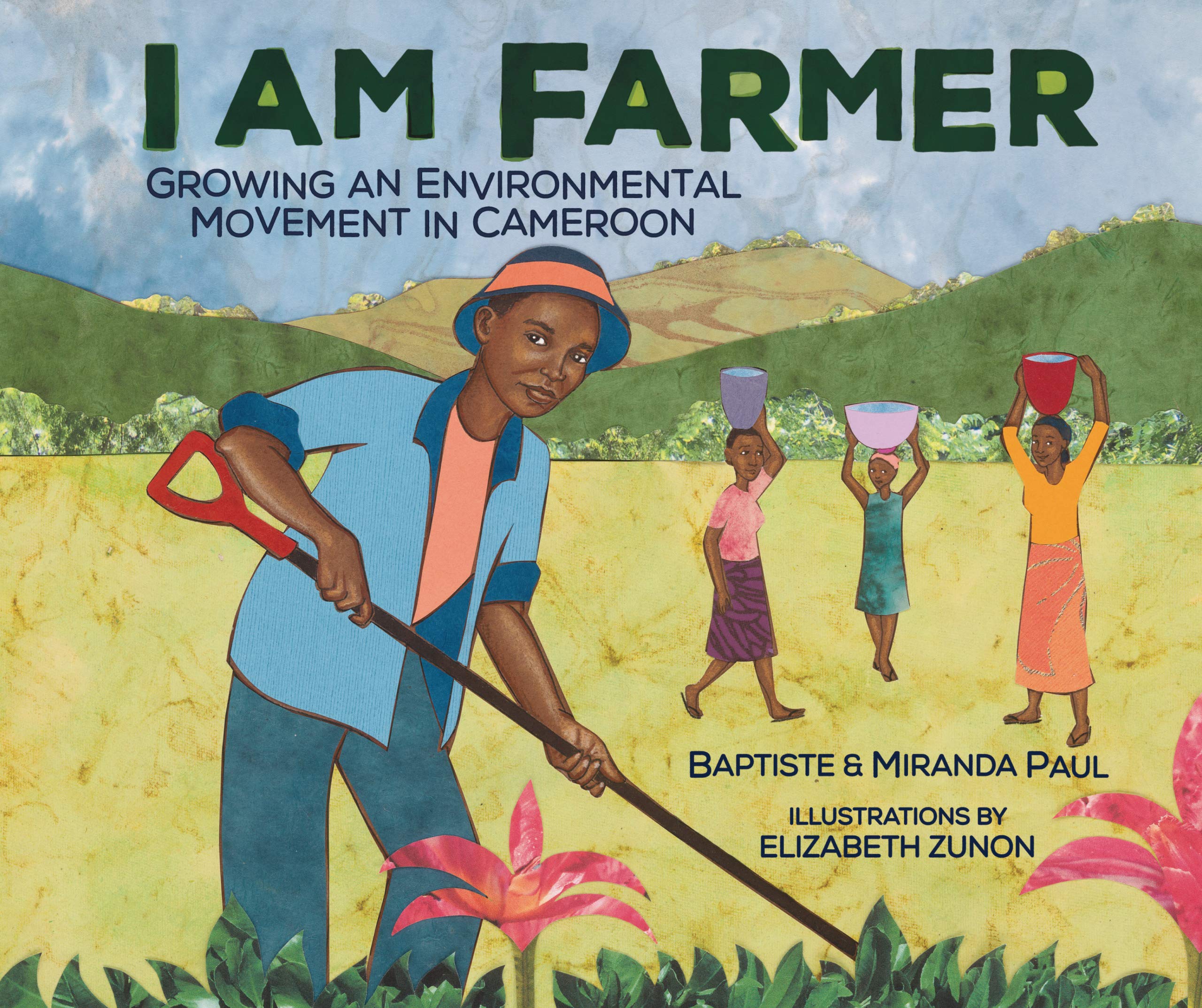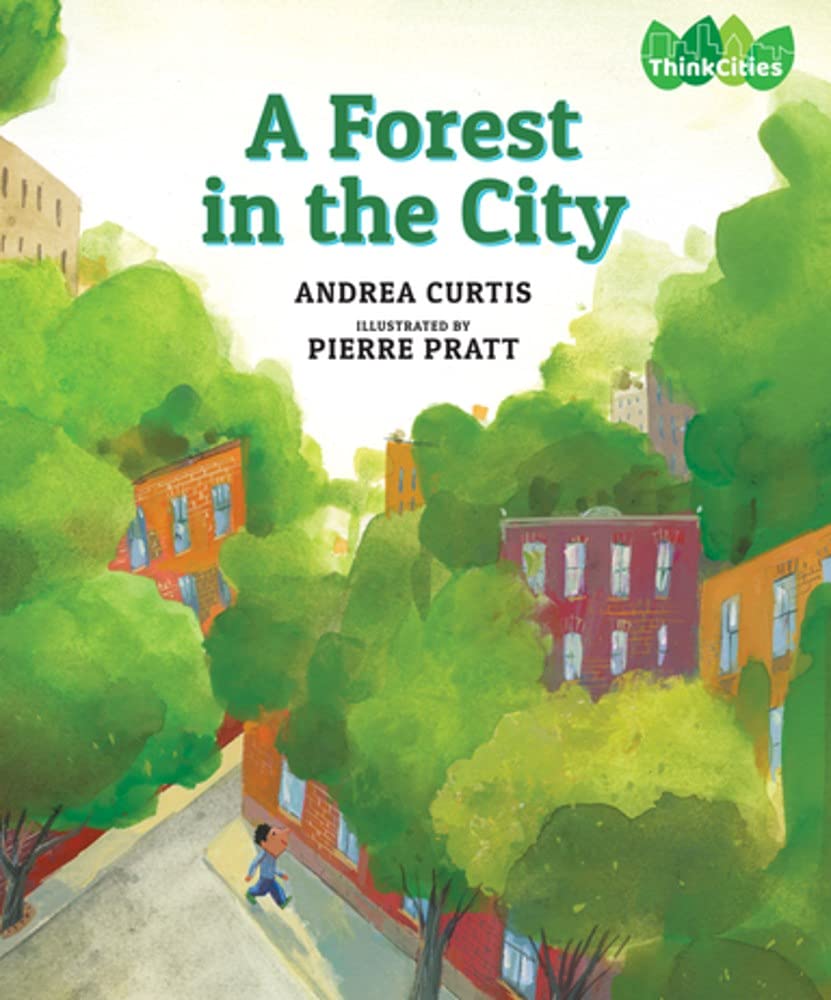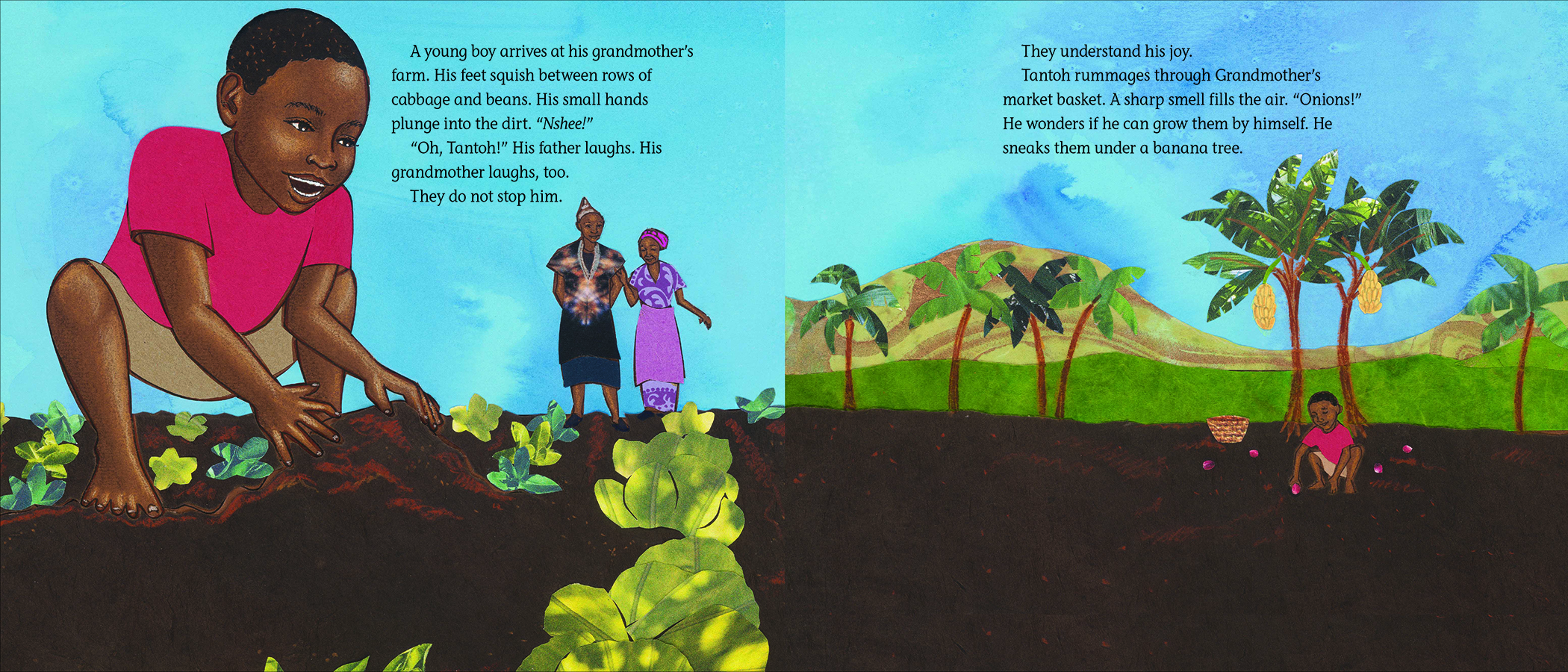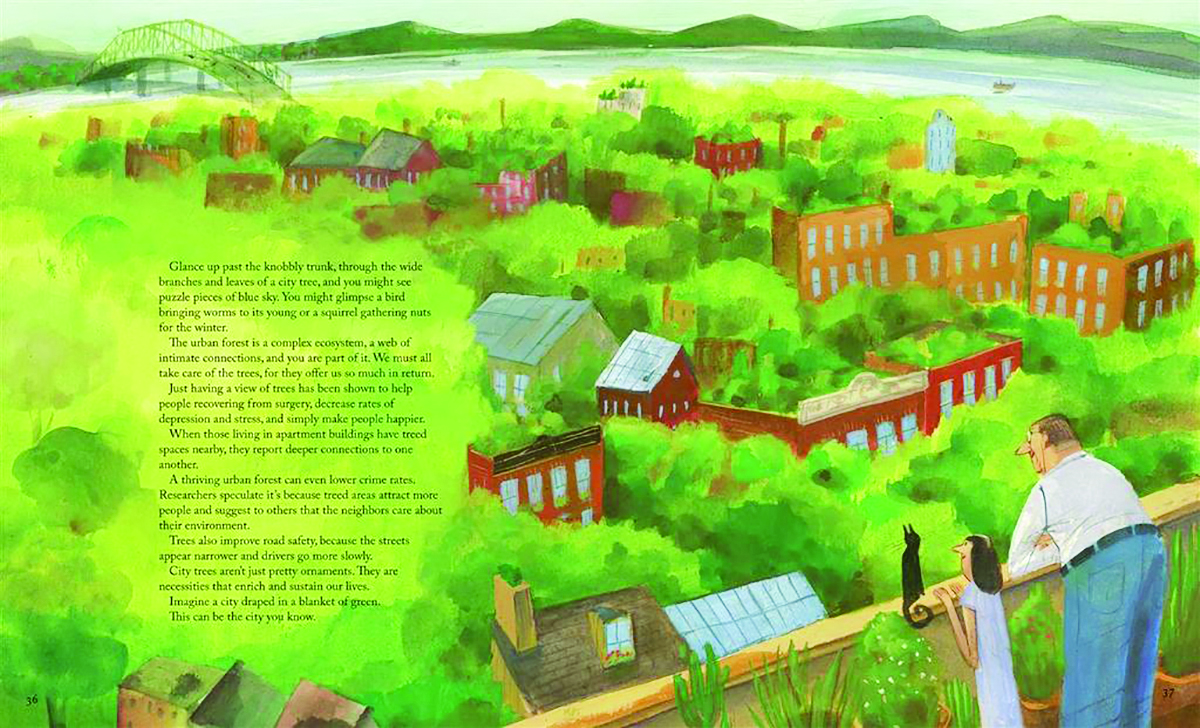Teaching Through Trade Books
Conservation Meets Design Thinking
Science and Children—January/February 2022 (Volume 59, Issue 3)
By Christine Anne Royce
This month’s theme of Design Thinking incorporates solving a problem but also considers how the solution affects people. The lessons focus on the inclusion of a disciplinary core idea while requiring the learner to use creativity, perseverance, and understanding—and reflect on how the end result helps people meet a need, want, or goal. Both lessons focus on the broader topic of conservation and how people living in a community can inform and influence the manner in which a problem is solved.

I Am Farmer: Growing an Environmental Movement in Cameroon
By Baptiste Paul and Miranda Paul
Illustrated by Elizabeth Zunon
ISBN: 978-1512449143
Millbrook Press
32 pages
Grades K–4
Synopsis
A young child in Cameroon has an interest in and love of farming, which initially brings ridicule from his classmates. Tantoh continues to pursue his interest and becomes an advocate for clean water and safe agricultural practices. Throughout the story, the reader is introduced to how ideas became dreams and improve life for communities.

A Forest in the City
By Andrea Curtis
Illustrated by Pierre Pratt
ISBN: 978-1773061429
Groundwood Books
40 pages
Grades 3–5
Synopsis
This narrative nonfiction book provides a wealth of information about trees that are planted in a city or what may be called an urban forest. The challenging conditions trees grow under, what cities are doing for future planning, and the importance of trees is explained from a historical perspective and current initiatives that are being used to protect these trees.
Grades K–2: Solving Challenges
Purpose
Students will solve a challenge to transport collected rainwater to their garden by constructing a model and explaining how it meets their need.
Materials
- I Am Farmer: Growing an Environmental Movement in Cameroon
- marbles and various craft materials including boxes, wheels, Legos, etc.
- World Map with Cameroon highlighted
- Supplemental Resources at https://bit.ly/3f5pbhq: Needs, Wants, and Ways Chart; Garden Map; Watering Plan Sheet; Park Map; Statement Sheet; and Cameroon Information Sheet
Engage
Begin by sharing the cover of the book with the students and ask them to predict what the book might be about. Read the title “I Am Farmer” and ask the students what farmers do. Also, point out that the title of the story is similar to saying “I am [insert your name]” in the context of the people in the story. How is saying this different than saying “I am a farmer?” Share the photos on the inside cover of the book and the captions with the students. As the students listen to information about Farmer Tantoh and his grandmother, ask the students what are some things a person interested in farming might need to learn in order to be successful? As you share the story with the students, ask them to keep the following question in mind: How did Farmer Tantoh change the environment in which he lived? As you read, ask the students to point out things he needed and how he changed things. Keep a running list of ways he solved the problem on the Needs, Wants, and Ways chart (see Supplemental Resources). Discuss the following points:
- pp. 4–6: Young Tantoh visits his grandmother’s farm and decides to try to grow onions. What happened to the onions? What did his grandmother say that the onions needed to grow?
- pp. 10–12: Earlier we heard that other kids called Tantoh “Farmer.” What are some of the things he did that a farmer does?
- pp. 16–20: What did Tantoh go to college to study? What is agriculture? What made Farmer Tantoh sick? After he gets better, Tantoh moved from focusing on farming to focusing on what other thing in the environment? Why did he change to focus on water safety? What were ways that Tantoh found water?
- pp. 21–29: Farmer Tantoh recognized that plants, animals, and people need water. How did the projects he helped with bring clean water to people and provide water for plants and animals?

Explore
In the story, Farmer Tantoh has a motto that says “When you don’t have what you want, use what you have.” Ask the students to describe what they think that means and give examples of how the different villages solved their problem using creativity and materials they had available. Present the following challenge to the students:
Your principal has a problem and has asked your class to help. The school garden needs to be watered every day. Unfortunately, the water will be turned off for nearly two weeks so that the pipes can be fixed. This will happen during the hottest part of the summer and there is no rain in the forecast, but there is rainwater that has been collected in large barrels that can be used. To water the plants, there are a variety of different materials that can be used. The principal has asked your class to help design a way to get the water from the barrels to the garden.
Share the Garden Map (see Supplemental Resources) with the students to help them think about their strategy to move the water. Keep a copy of the map available, and point out some of the challenges that the students will need to overcome, such as part of the path goes uphill. Help the students keep in mind that design thinking is a very open-ended process but begins with the idea of empathizing and understanding the human needs of the problem. This can be done by asking the students to identify what people might be thinking or concerned about if they are in charge of watering the garden this coming summer. Once students have had a chance to consider how this problem and challenge might affect different people, have the students think about designing ways that help them move the water from one place to another using the list of materials available that also considers the challenges listed. Teacher note: Students should create/design some type of transportation vehicle that can hold and move the water. Rather than using actual water in the design process, explain to the students that while they are planning and testing, they can use marbles to represent the water. Some things to share with the students would be:
- Since it is a big garden and would take many trips, we do not want to carry the water. We would like to move it there using different strategies.
- We would like to use materials we already have available rather than purchase new materials.
Direct the students to the materials available and ask them to discuss with their team members possible ideas for building a device to move water. Have them record their initial ideas on their Water Planning Sheet (see Supplemental Resources) by sketching out possible strategies. Point out to the class that although the distance to the garden is much farther, the principal wants to see possible ideas that are a smaller version so they will only be designing models. Ask the students to then discuss their ideas and start to construct their recommended solution. If construction materials are not easily accessible, the Explore part of the activity can be stopped at this point and students can share their design sketches. If students are able to construct the prototype of their design, have them present that along with their sketches. Finally, if students were able to construct their design, set up a test path in the classroom that includes similar challenges that are on the map and ask the students to test their design and identify ways that they could improve it based on their trial.
Explain
There are two different aspects for students to consider as they explain and report on their diagrams. First, from the design thinking side, they should explain their initial idea and what they found to be successful and problematic as they tried out their prototype. Questions to help young students focus on this topic include: Can you explain why your design was successful? What were challenges you had with your design? If you made changes to your design, what would you change? Can you point out parts of your design that helped you accomplish the task? For example, students might point to wheels to help move the design on a path. The second area to focus on relates to how humans make choices about their environment. After students have had a chance to discuss their designs, ask them to consider how the garden and the need to water the garden affects the environment. An opening question might be “Can you tell me how we changed our outdoor environment when we planted a garden? When we put in a path to get to the garden?” Allow students to generate ideas but have them explain the reason “why” they think the idea is a solid one.
Elaborate
Using a world map, point out Cameroon to the students. Share information about the country using the information fact sheet (see Supplemental Resources). Point out to the students that Farmer Tantoh tried to grow different things and helped to put in systems so people had clean water. Involve the students in the discussion related to how different actions such as these can affect the environment. What are the positive results of the water systems and gardens he helped build? What are the negative results? Explain to the students that the principal was so thrilled with the ideas generated by the class that he volunteered the class to help the town council determine what should be in a park that the city is developing. Share the proposed Park Map (see Supplemental Resources) with the students and ask them to discuss the following two topics: (1) Where should we put a playground for children and what type of equipment should be placed there? What type of changes would we need to make to the area selected? (2). Some people suggested planting a flower garden to attract butterflies, but that would require cutting down some of the trees in location. Is this a good idea, why or why not? What are the benefits?
Guide the students through a discussion where they consider both the positives and negatives of these two different ideas. Ask the students to work with a partner to develop a statement about each idea that they would present to the town council (see Supplemental Resources). Invite the principal in to hear the students practice explaining their points.
Evaluate
Using design thinking to address problems or challenges allows students to tap into their creativity. In this activity, students discuss ideas in the text regarding how Farmer Tantoh was helping to solve problems that were important to the people who lived in his community. Students then tackled a problem of their own while considering how decisions made by humans impact the environment.
Grades 3–5: Our Impact on Urban Forests
Purpose
Students identify the benefits of and problems with planting trees and other vegetation in cities. Students survey people on their thoughts related to vegetation in their local area and recommend changes.
Materials
- A Forest in the City
- chart paper and markers
- Supplemental Resources at https://bit.ly/3JRQfzd: Image slides, Is the City Green? Thoughts About Trees, Making a Tree-mendous Impact, and Ideation student sheet
Engage
One of the key characteristics of design thinking is the fact that it approaches problems from the human or user perspective. This first step involves the need to empathize and define the problem. Throughout this activity, the book A Forest in the City will be used in each of the lesson parts. To begin, share the cover of the book with the students and ask them to start to discuss what the focus of the book might be. It is likely students will discuss that there is a forest in the city, which would be one interpretation, and others might discuss that while there are trees in the city, “you can’t have a forest in a city.” Read page 5 to the students where the reader is asked “Is this the city you know?” and return to the discussion with the students about the city you live in. Are there trees? Where are they? Do they think having trees in the city is a positive thing? Why or why not? Continue to read through page 11 of the text discussing the following points with the students.
- p. 7: What do you think the author means by “easy places for trees to grow?” Pose the problem that is the focus of the book: How do we build a place where people and trees can grow together in harmony? and ask students to brainstorm what each might need to survive and thrive in the city.
- p. 8: What are some reasons you think people started to plant trees in cities?
Point out that there was a point when humans cut down trees and other vegetation as they moved into an area and as they recognized trees served different purposes, they planted different types of greenery.

Explore
Post the following question: What impacts how much vegetation (trees, shrubs, etc.) grows in cities?
Share the first slide with the students (see Supplemental Resources) and engage them in a discussion related to what they are seeing in the image. Help them understand that in these aerial and satellite photos, we can see green patches, construction such as buildings, and changes to the area. Then ask students to look at the before and after pictures one at a time and complete the Is the City Green student sheet (see Supplemental Resources). Most images show a loss of vegetation over time; however, students may also note that there were more houses constructed, some locations seemed to get browner, and other differences. It should be noted that there are multiple changes to these locations over time, but for this activity, the students should focus on vegetation. Once students have had a chance to work collaboratively with peers and discuss the images, bring the class back together and continue to share the book with the students. Refresh the student’s memory that the story last discussed how cities around the world recognized the importance of trees. Do they think that these images show that people think vegetation is important? Why or why not? Next, pose the question “Do you think trees can grow as easily in cities as in the forest? Why or why not?” Make a list of both sides of the argument on chart paper so that the students can refer to it. Points to stop for discussion include:
- pp. 12–15: What are some of the needs that urban trees have and some of the problems that they face in the city?
- pp. 16–18: What are some important lessons about trees in cities that people learned? What are some strategies to help city trees survive?
- pp. 19–25: The author states that poor planning is the problem that arises in cities because of trees. Another problem that the author describes are invasive species of insects. What ways does the author mention about handling these two areas?
The next part of Explore has students interviewing different people regarding their thoughts about trees in their hometown. Have the students interview/survey two to three different people and complete the Thoughts About Trees Sheet (see Supplemental Resources) and bring the information to class. Teacher’s Note: The data can be collated in a separate lesson that connects mathematics to this lesson or as a task where students add their data to a larger display chart.
Explain
This activity crosses three different disciplinary core ideas. The first is that living things (including humans) affect the physical characteristics of their regions. The second focuses on the idea that humans can make decisions to help protect Earth’s resources and environments. The third idea relates to engineering and technological design and is discussed in the Elaborate phase. Using the Making a Tree-mendous Impact T-chart (see Supplemental Resources), ask students in pairs or small groups to record their understanding about these two topics and the importance of vegetation in cities. The left side asks students to consider ways humans have affected the amount of vegetation (trees, shrubs, plants, etc.) where they live over time. The right side asks the students to describe decisions that can be made to help protect vegetation in cities. After allowing time for students to work collaboratively, return to a whole-group setting and discuss the different responses that they provided for each side. Finally, to tie this back to the idea of design thinking, ask the students to explain what they found people thought about trees in their local city through their interviews and interpret the compiled data using questions such as: What did we learn about people’s thoughts regarding vegetation in the city? What type of change if any do you think people might want?
Elaborate
Finish sharing the story with the students from page 26–37. The information in these pages relates to the benefits that trees provide to people who live in the city, how people can help protect and take care of trees, and some of the problems or challenges that come with having trees in a populated area. Now that students have had a chance to learn more about urban forests and what impacts humans have had, ask them to return to the survey data they collected. The Elaborate section of this activity ties back into the human need part of design thinking and the process of ideation, which is the generating of ideas to help solve the defined problem. Ask students to examine the data and information collected to identify what recommendations can be made about the trees or shrubs in their town. (Note to teacher, the survey is structured to guide students toward a particular outcome. This is done for the ability to design a lesson. In true design thinking, this would not be done.) Potential problems that might be considered include: There are not enough (or too many) trees in a particular area. There is a need to think about space that trees need to grow before we plant more. The trees bump buildings or windows or need to be trimmed so that we can see down the road. There needs to be a better way to water the trees. The leaves, fruit, nuts, etc., need to be cleaned up. Ask each group of students to consider one of these ideas and develop a list of potential ways to solve this problem. As they are doing this, have them complete the Ideation student sheet (see Supplemental Resources), which also asks them to list the pros and cons for each idea. After students have completed the brainstorming process, ask them to select one idea to share with the class. As they share the idea, class peers can provide input and feedback to improve the strategy. There are several different online resources listed below to assist students in their research.
Evaluate
Students are first asked to think about their own city, which ties this lesson to their locale as they also survey others about their thoughts regarding trees and vegetation in their community. By examining images, they compare and contrast how vegetation has changed over time. Finally, students consider pros and cons as they think about solving a local problem.
Online Resources
Greening Up Globally – Forests and Farms
https://earthobservatory.nasa.gov/blogs/eokids/greening-up-globally-forests-and-farms/
Tree Equity in America’s Cities
https://www.americanforests.org/our-work/urban-forestry/
Tree Equity Score
https://treeequityscore.org/
Urban Heat Islands
https://earthobservatory.nasa.gov/blogs/eokids/wp-content/uploads/sites/6/2018/08/EOKids_201701_UHI.pdf
Christine Anne Royce (caroyce@aol.com) is a professor at Shippensburg University in Shippensburg, Pennsylvania, and past president of NSTA.
Earth & Space Science Interdisciplinary Literacy Teaching Strategies Elementary


